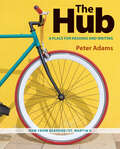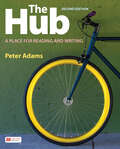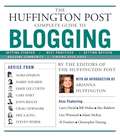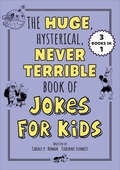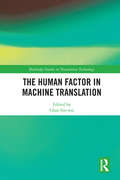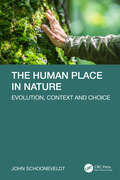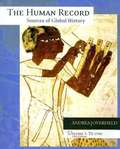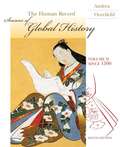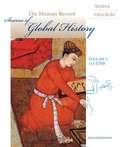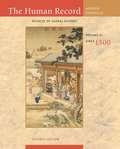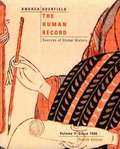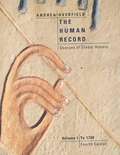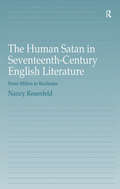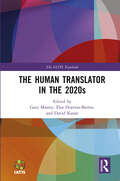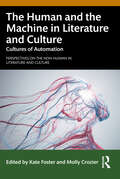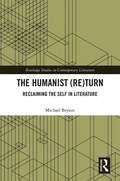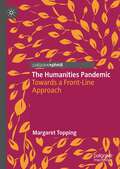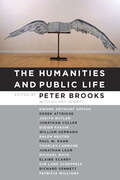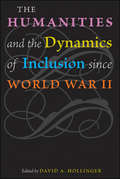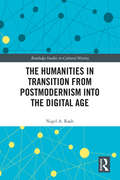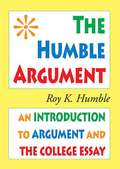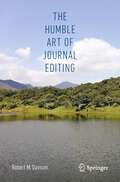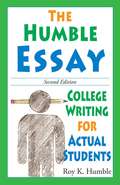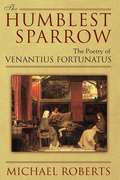- Table View
- List View
The Hub: A Place for Reading and Writing
by Peter AdamsPeter Adams, founder of the Accelerated Learning Program (ALP), introduces The Hub: A Place for Reading and Writing, the first and only hybrid digital and print course materials developed specifically for corequisite and ALP first-year writing courses. The Hub is based on innovative, sound, and widely replicated research into best practices for improving developmental student outcomes. The high-quality instructional materials have been carefully developed and thoroughly class-tested to support students of varying skill levels in first-year composition and corequisite courses. In addition, The Hub offers the unparalleled instructor support that only Peter Adams can provide. This flexible digital resource available through Macmillan Learnings Achieve platform, and accompanied by a print text, provides all of the course materials you need to support every learner in corequisite composition. From planning to implementation, The Hub is THE destination for everything you need for your first-year corequisite composition or ALP course.
The Hub: A Place for Reading and Writing
by Peter AdamsThe Hub offers reading/writing projects that will help you succeed in any college course, not just composition courses.
The Huffington Post Complete Guide to Blogging
by Arianna Huffington The editors of the Huffington PostThe editors of The Huffington Post -- the most linked-to blog on the web -- offer an A-Z guide to all things blog, with information for everyone from the tech-challenged newbie looking to get a handle on this new way of communicating to the experienced blogger looking to break through the clutter of the Internet. With an introduction by Arianna Huffington, the site's cofounder and editor in chief, this book is everything you want to know about blogging, but didn't know who to ask. As entertaining as it is informative, The Huffington Post Complete Guide to Blogging will show you what to do to get your blog started. You'll find tools to help you build your blog, strategies to create your community, tips on finding your voice, and entertaining anecdotes from HuffPost bloggers that will make you wonder what took you so long to blog in the first place. The Guide also includes choice selections from HuffPost's wide-ranging mix of top-notch bloggers. Among those who have blogged on HuffPost are Barack Obama, Hillary Clinton, Larry David, Jane Smiley, Bill Maher, Nora Ephron, Jon Robin Baitz, Steve Martin, Lawrence O'Donnell, Ari Emanuel, Mia Farrow, Al Franken, Gary Hart, Barbara Ehrenreich, Edward Kennedy, Harry Shearer, Nancy Pelosi, Adam McKay, John Ridley, and Alec Baldwin.
The Huge, Hysterical, Never Terrible Book of Jokes for Kids (Silly Jokes)
by Carole P. Roman Corinne SchmittGet silly as you practice problem-solving with 2,000 riddles and jokes for kids of all ages!Are you ready for hours of entertainment, guaranteed to make you laugh and tease your brain? Then you've come to the right place, because this book of jokes is a giant combination of THREE popular joke books for kids. Inside, you'll discover tons of silly fun that will engage your imagination, cultivate your creative thinking skills, and have you howling with hysterics!This huge 3-in-1 collection includes:The Big Book of Silly Jokes for Kids: This beloved bestseller is packed with knee-slapping knock-knocks, side-splitting puns, and more!The Big Book of Silly Jokes for Kids 2: Keep the fun going with even more clean and corny jokes for the whole family.Tricky Riddles for Kids: Put your brain to the test with a collection of silly riddles that get more challenging as you go. How many can you solve? Sharpen your skills and have a blast with The Huge, Hysterical, Never Terrible Book of Jokes for Kids!
The Human Factor in Machine Translation (Routledge Studies in Translation Technology)
by Sin-Wai ChanMachine translation has become increasingly popular, especially with the introduction of neural machine translation in major online translation systems. However, despite the rapid advances in machine translation, the role of a human translator remains crucial. As illustrated by the chapters in this book, man-machine interaction is essential in machine translation, localisation, terminology management, and crowdsourcing translation. In fact, the importance of a human translator before, during, and after machine processing, cannot be overemphasised as human intervention is the best way to ensure the translation quality of machine translation. This volume explores the role of a human translator in machine translation from various perspectives, affording a comprehensive look at this topical research area. This book is essential reading for anyone involved in translation studies, machine translation or interested in translation technology.
The Human Place in Nature: Evolution, Context and Choice
by John SchooneveldtThis book explores a new approach to understanding the evolution of mind and consciousness by examining the perceptual abilities of animals and the way they experience their world. It offers a science-based bottom-up approach to our own conscious worldview by seeing it through the eyes of others. Emphasis is on the role of context in evolution and the way animals internalize and engage with the contextual properties of their world that are meaningful for them. The core argument is that a context, which is subjective and comprised of the perceptual capacities, offers new insights into the evolution of mind. Rather than seeing biological evolution in terms of the emergence of mindless forms and cultural evolution as the emergence of disembodied minds, the book seeks to integrate these two perspectives through the rigorous mapping of contexts.Key Features Reveals an understanding of animal minds Formulates a hypothesis for the evolution of consciousness Includes a discussion of the origin of technological innovation Provides a rationale for the ecology of mind Proposes a theory of the evolution of language Outlines the science of experience and how it influences choice Explains the role of context and choice with respect especially to human ecology
The Human Record To 1700: Sources Of Global History
by Alfred J. Andrea James H. OverfieldThe Human Record is a leading collection of primary sources for world history courses and can be used as either a core or supplementary text. Unlike many world history texts that center on the West, The Human Record provides balanced coverage of the global past. The book features both written and artifactual sources placed in their full historical contexts through introductory essays, footnotes, and focus questions. Each volume in the Fifth Edition begins with a prologue-"Primary Sources and How We Read Them"-that introduces students to the proper methods for reading and interpreting primary source material; the authors also walk students through sample visual and textual sources to help them master this skill. Part, chapter, section, and individual source introductions help students place primary sources within a historical context. New! Approximately one-third of the selections in each volume are new to this edition, and many of the remaining sources contain updated explanations and focus questions. New! The final chapter in Volume II has been revised to include coverage of recent global events such as the September 11th attacks. "Questions for Analysis," which precede each source, are presented in a three-tiered format that resembles a historian s approach to source analysis. Each volume contains a Table of Contents organized by topical and geographical criteria. Several visual sources, such as photos of coins, sculptures, paintings, and textiles, are provided in each volume.
The Human Record: Since 1500
by Alfred J. Andrea James H. OverfieldNow in its Sixth Edition, The Human Record continues to be the leading primary source reader for the World History course. Each volume contains a blend of visual and textual sources; these sources are often paired or grouped together for comparison. A prologue entitled, "Primary Sources and How to Read Them," appears in each volume and serves as a valuable pedagogical tool. Unlike many world history texts that center on the West, The Human Record provides balanced coverage of the global past. Approximately one-third of the sources in the Sixth Edition are new, and these documents continue to reflect the myriad experiences of the peoples of the world.
The Human Record: Sources Of Global History To 1700
by Alfred J. Andrea James H. OverfieldNIMAC-sourced textbook
The Human Record: Sources of Global History - Since 1500 (Seventh Edition)
by Alfred J. Andrea James H. OverfieldTHE HUMAN RECORD is the leading primary source reader for the World History course, providing balanced coverage of the global past. Each volume contains a blend of visual and textual sources which are often paired or grouped together for comparison. A prologue entitled "Primary Sources and How to Read Them" appears in each volume and provides background and guidance for analyzing sources such as those in the text. Approximately one-third of the sources in the Seventh Edition are new, and these documents continue to reflect the myriad experiences of the peoples of the world.
The Human Record: Sources of Global History Volume II, Since 1500
by Alfred J. Andrea James H. OverfieldUnlike some other world history texts that center on the West, The Human Record provides balanced coverage of the global past. The book features both written and artifactual sources that are placed in their full historical contexts through introductory essays, footnotes, and focus questions. The text sheds light on the experiences of women and non-elite groups while maintaining overall balance and a focus on the major patterns of global historical developments through the ages.
The Human Record: To 1700 (4th edition)
by Alfred J. Andrea James H. OverfieldUnlike some other world history texts that center on the West, The Human Record provides balanced coverage of the global past. The book features both written and artifactual sources that are placed in their full historical contexts through introductory essays, footnotes, and focus questions. The text sheds light on the experiences of women and non-elite groups while maintaining overall balance and a focus on the major patterns of global historical developments through the ages.
The Human Satan in Seventeenth-Century English Literature: From Milton to Rochester
by Nancy RosenfeldFramed by an understanding that the very concept of what defines the human is often influenced by Renaissance and early modern texts, this book establishes the beginning of the literary development of the satanic form into a humanized form in the seventeenth century. This development is centered on characters and poetry of four seventeenth-century writers: the Satan character in John Milton's Paradise Lost and Paradise Regained, the Tempter in John Bunyan's Grace Abounding to the Chief of Sinners and Diabolus in Bunyan's The Holy War, the poetry of John Wilmot, earl of Rochester, and Dorimant in George Etherege's Man of Mode. The initial understanding of this development is through a sequential reading of Milton and Bunyan which examines the Satan character as an archetype-in-the-making, building upon each to work so that the character metamorphoses from a groveling serpent and fallen archangel to a humanized form embodying the human impulses necessary to commit evil. Rosenfeld then argues that this development continues in Restoration literature, showing that both Rochester and Etherege build upon their literary predecessors to develop the satanic figure towards greater humanity. Ultimately she demonstrates that these writers, taken collectively, have imbued Satan with the characteristics that define the human. This book includes as an epilogue a discussion of Samson in Milton's Samson Agonistes as a later seventeenth-century avatar of the humanized satanic form, providing an example for understanding a stock literary character in the light of early modern texts.
The Human Translator in the 2020s (The IATIS Yearbook)
by Gary Massey David Katan Elsa Huertas-BarrosHas the language industry of the 21st century been racing ahead of the translation profession and leaving translators behind? Or are translators adapting to new sociotechnical realities and societal demands, and if so, how? The chapters in this volume seek to shed light on the profiles and position of human translators in the current decade. This collection draws together the work of leading authors to reflect on the constantly evolving language industry. The eight chapters present new perspectives on, and concepts of, translation in a digital world. They highlight the shifts taking place in the sociotechnical environment of translation and the need to address changing buyer needs and market demands with new services, profiles and training. In doing so, they share a common focus on the added value that human translators can and do bring to bear as adaptive, creative, digitally literate experts. Addressing an international readership, this volume is of interest to advanced students and researchers in translation and interpreting studies, and professionals in the global language industry.
The Human and the Machine in Literature and Culture: Cultures of Automation (Perspectives on the Non-Human in Literature and Culture)
by Kate Foster and Molly CrozierAutomation is everywhere: in the supermarket, in home appliances, and on our commutes. While we worry about what automation means for human autonomy now, human societies have long wondered about their replacement by machines. The Human and the Machine in Literature and Culture explores the pervasive – and long-standing – influence of automation on humanity by dismantling the prevalent future-oriented perspective of many automation debates. This collection examines how literature has conceptualized automation over centuries, from utopian visions of a world liberated from work and domestic labour to dystopian futures in which humans are surplus to requirements. We set out social and industrial developments which feed into discourses of automation and its mediation in literary cultures. By bringing together theoretical approaches to real-world automation with readings of its literary interpretations, this volume demonstrates literature’s role as a space for hypothesizing alternate realities, making clear literature’s propensity to inform our attitudes to real-world phenomena.
The Humanist (Routledge Studies in Contemporary Literature)
by Michael BrysonThe exciting new book argues for a renewed emphasis on humanism--contrary to the trend of post-humanism, or what Neema Parvini calls "the anti-humanism" of the last several decades of literary and theoretical scholarship. In this trail-blazing study, Michael Bryson argues for this renewal of perspective by covering literature written in different languages, times, and places, calling for a return to a humanism, which focuses on literary characters and their psychological and existential struggles—not struggles of competition, but of connection, the struggles of fragmented, incomplete individuals for integration, wholeness, and unity.
The Humanities "crisis" And The Future Of Literary Studies
by Paul JayDemonstrating that the supposed drawbacks of the humanities are in fact their source of practical value, Jay explores current debates about the role of the humanities in higher education, puts them in historical context, and offers humanists and their supporters concrete ways to explain the practical value of a contemporary humanities education.
The Humanities Pandemic: Towards a Front-Line Approach
by Margaret ToppingThis book explores how the Humanities can play an essential services role in addressing global challenges such as the Covid pandemic. In arguing for their contribution alongside that of the Health Sciences, it calls for a new critical engagement – honest and self-reflective – from Humanities scholars with the question of how to overcome a fundamental challenge facing universities globally: finding a common language and set of ‘cultural’ assumptions between disciplines as the basis for communication. The book looks at the nature of the challenges that can beset collaboration across disciplines (and indeed across sectors, notably between researchers and the general public) and argues for a new Translational Humanities, in both the sense of an applied Humanities and a Humanities that can translate itself across disciplines and sectors. Crucially, too, it suggests that it is not narratives such as a pandemic novel or contagion film that successfully engage with contentious debates about the challenges of Covid, but rather critically distant texts and thematic contexts that typically place the self in the position of other like travel narratives. This book sits at a previously unconsidered intersection between debates around interdisciplinary collaboration and communication, theories of intercultural contact and encounter, and the role of the Humanities in tackling global issues.
The Humanities and Public Life
by Peter BrooksThis book tests the proposition that the humanities can, and at their best do, represent a commitment to ethical reading. And that this commitment, and the training and discipline of close reading that underlie it, represent something that the humanities need to bring to other fields: to professional training and to public life.What leverage does reading, of the attentive sort practiced in the interpretive humanities, give you on life? Does such reading represent or produce an ethics? The question was posed for many in the humanities by the “Torture Memos” released by the Justice Department a few years ago, presenting arguments that justified the use of torture by the U.S. government with the most twisted, ingenious, perverse, and unethical interpretation of legal texts. No one trained in the rigorous analysis of poetry could possibly engage in such bad-faith interpretation without professional conscience intervening to say: This is not possible.Teaching the humanities appears to many to be an increasingly disempowered profession—and status—within American culture. Yet training in the ability to read critically the messages with which society, politics, and culture bombard us may be more necessary than ever in a world in which the manipulation of minds and heartsis more and more what running the world is all about.This volume brings together a group of distinguished scholars and intellectuals to debate the public role and importance of the humanities. Their exchange suggests that Shelley was not wrong to insist that poets are the unacknowledged legislators of mankind: Cultural change carries everything in its wake. The attentive interpretive reading practiced in the humanities ought to be an export commodity to other fields and to take its place in the public sphere.
The Humanities and the Dynamics of Inclusion since World War II
by David A. HollingerThe role played by the humanities in reconciling American diversity—a diversity of both ideas and peoples—is not always appreciated. This volume of essays, commissioned by the American Academy of Arts and Sciences, examines that role in the half century after World War II, when exceptional prosperity and population growth, coupled with America's expanded political interaction with the world abroad, presented American higher education with unprecedented challenges and opportunities. The humanities proved to be the site for important efforts to incorporate groups and doctrines that had once been excluded from the American cultural conversation.Edited and introduced by David Hollinger, this volume explores the interaction between the humanities and demographic changes in the university, including the link between external changes and the rise of new academic specializations in area and other interdisciplinary studies.This volume analyzes the evolution of humanities disciplines and institutions, examines the conditions and intellectual climate in which they operate, and assesses the role and value of the humanities in society.Contents:John Guillory, "Who's Afraid of Marcel Proust? The Failure of General Education in the American University" Roger L. Geiger, "Demography and Curriculum: The Humanities in American Higher Education from the 1950s through the 1980s" Joan Shelley Rubin, "The Scholar and the World: Academic Humanists and General Readers"Martin Jay, "The Ambivalent Virtues of Mendacity: How Europeans Taught (Some of Us) to Learn to Love the Lies of Politics"James T. Kloppenberg, "The Place of Value in a Culture of Facts: Truth and Historicism"Bruce Kuklick, "Philosophy and Inclusion in the United States, 1929–2001"John T. McGreevy, "Catholics, Catholicism, and the Humanities, 1945–1985"Jonathan Scott Holloway, "The Black Scholar, the Humanities, and the Politics of Racial Knowledge Since 1945"Rosalind Rosenberg, "Women in the Humanities: Taking Their Place"Leila Zenderland, "American Studies and the Expansion of the Humanities"David C. Engerman, "The Ironies of the Iron Curtain: The Cold War and the Rise of Russian Studies"Andrew E. Barshay, "What is Japan to Us"?Rolena Adorno, "Havana and Macondo: The Humanities Side of U.S. Latin American Studies, 1940–2000"
The Humanities in Transition from Postmodernism into the Digital Age (Routledge Studies in Cultural History #89)
by Nigel A. RaabThe Humanities in Transition explores how the basic components of the digital age will have an impact on the most trusted theories of humanists. Over the past two generations, humanists have come to take basic postmodern theories for granted whether on language, knowledge or time. Yet Michel Foucault, Jacques Derrida and similar philosophers developed their ideas when the impact of this digital world could barely be imagined. The digital world, built on algorithms and massive amounts of data, operates on radically different principles. This volume analyzes these differences, demonstrating where an aging postmodernism cannot keep pace with today’s technologies. The book first introduces the major influence postmodern had on global thought before turning to algorithms, digital space, digital time, data visuals and the concept to digital forgeries. By taking a closer look at these themes, it establishes a platform to create more robust humanist theories for the third millennium. This book will appeal to graduate students and established scholars in the Digital Humanities who are looking for diverse and energetic theoretical approaches that can truly come to terms with the digital world.
The Humble Argument: An Introduction To Argument And The College Essay
by Roy K. HumbleThis down-to-earth textbook introduces argumentative writing in everyday language so that non-majors are more likely to understand these ideas and then put them to practical use. It is also the only rhetoric textbook in the world with a sense of humor.
The Humble Art of Journal Editing
by Robert M. DavisonThe publication of scholarly research is both a major driver of social progress and a significant industry in its own right. Scholarly research is the focus of attention for countless numbers of scholars globally and a key measure of scholarly excellence. Much has been written about the conduct of research that is designed to help scholars attain appropriate standards of rigor and relevance, and indeed craft their research outputs in ways appropriate for different venues, notably as journal articles, conference papers, book chapters, and books. However, although scholarly researchers fulfill roles other than as authors, for instance as journal reviewers and editors, there is a dearth of consolidated information about the nature of editorial work. Drawing on over two decades of experience in editing scholarly journals, the author offers a more systematic guide to scholarly journal editing.The book begins with an introduction to the art of scholarly journal editing,the nature of that art (Chapter 1), and an examination of editorial promulgation of cultural values of scholarly journals with an emphasis on responsible research (Chapter 2). Chapter 3 examines the many issues associated with sourcing content, and opines on the novelty, breadth, and depth of research, including discussions of indigenous theorization, serendipity, iconoclastic research, and the value of special issues. Chapter 4 deals with the review process and offers advice for formulating effective reviewer guidelines that lead to constructive and developmental advice for authors. The next two chapters discuss the audience of the journal as well as publisher relations. Finally, the book is concluded with thoughts and recommendations about emerging challenges, such as the ethics of AI tools (like ChatGPT), predatory journals, and the open-access movement.Offering a practical guide to editing scholarly journals, this book will be a key resource for scholars making the leap from researcher to editor, regardless of discipline.
The Humble Essay (Second Edition)
by Roy K. HumbleThis composition textbook introduces college writing in everyday language so that non-majors are more likely to actually read these chapters, understand the ideas, and then put those ideas to good use.
The Humblest Sparrow: The Poetry of Venantius Fortunatus
by Michael RobertsA long-awaited study of the poetry of Venantius Fortunatus
